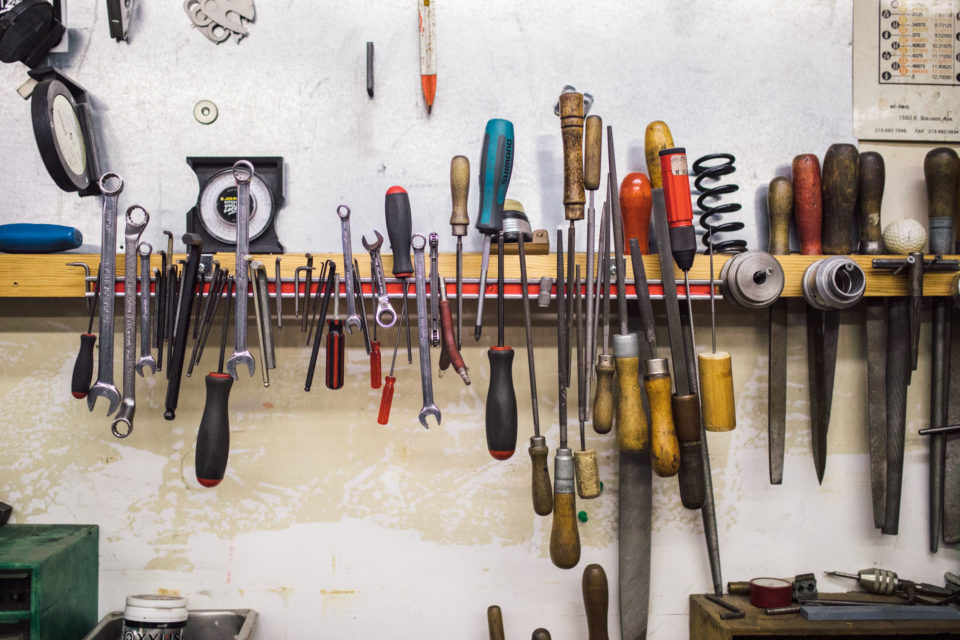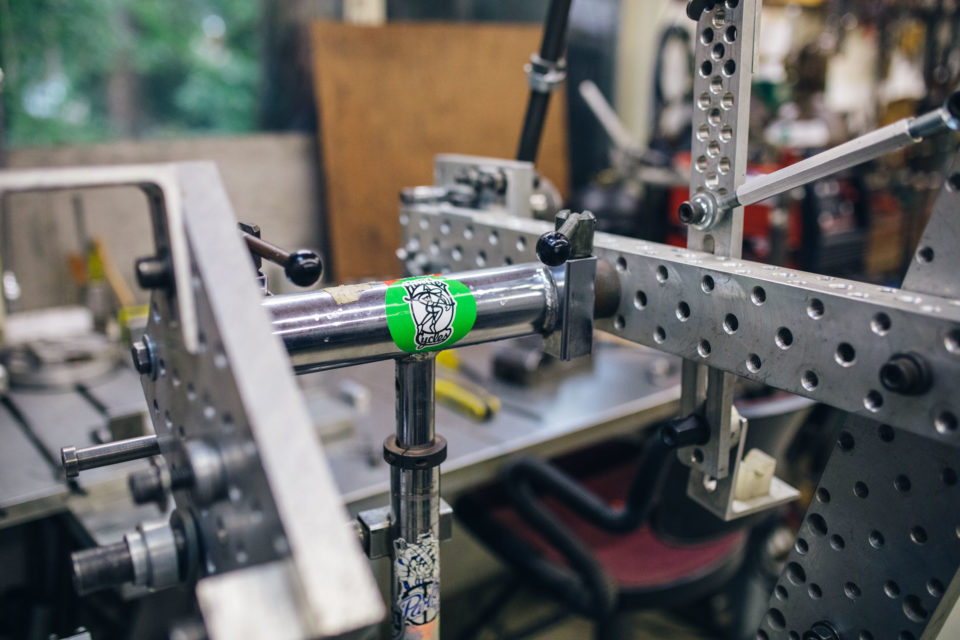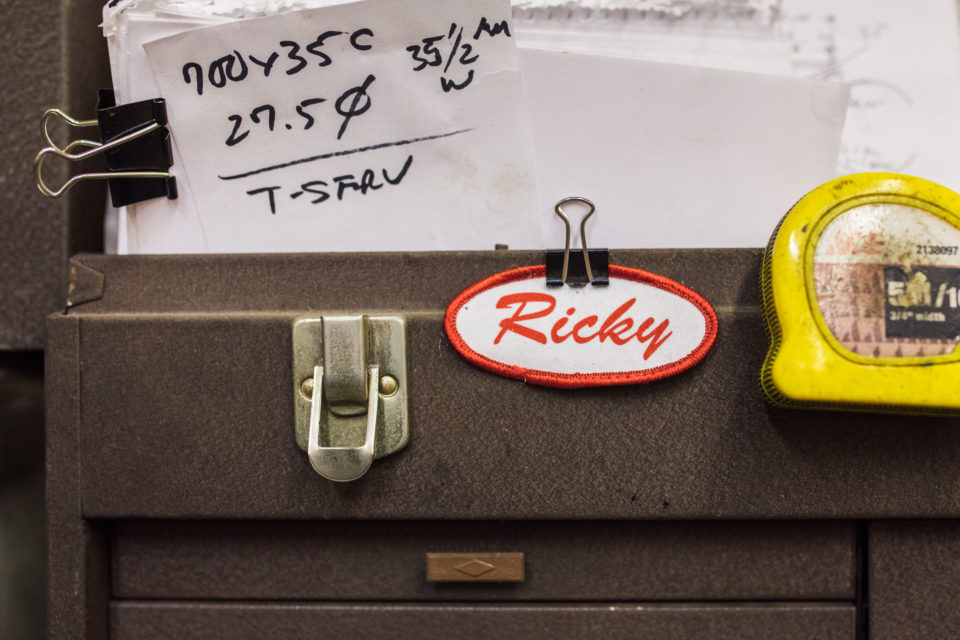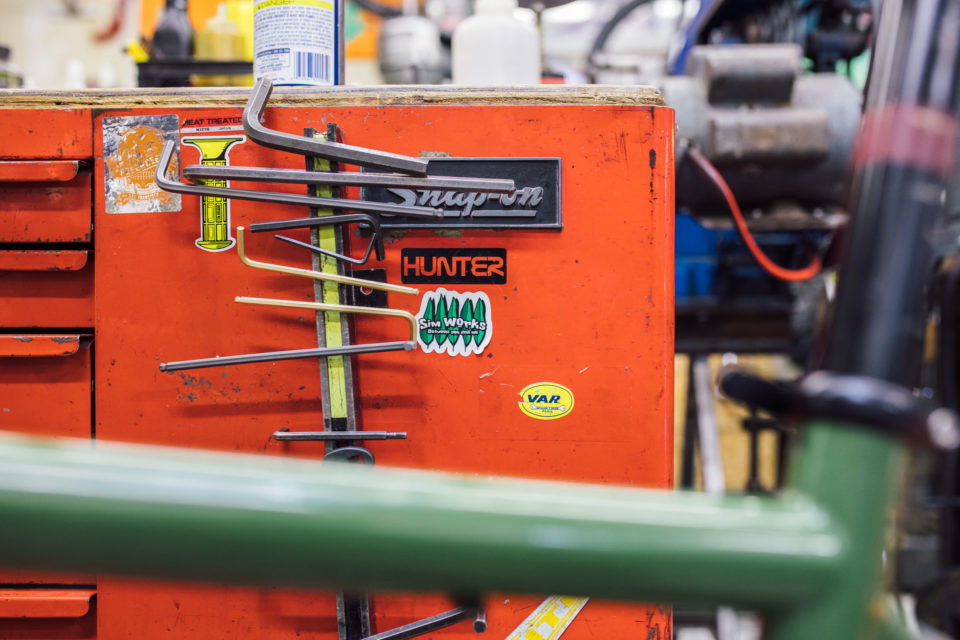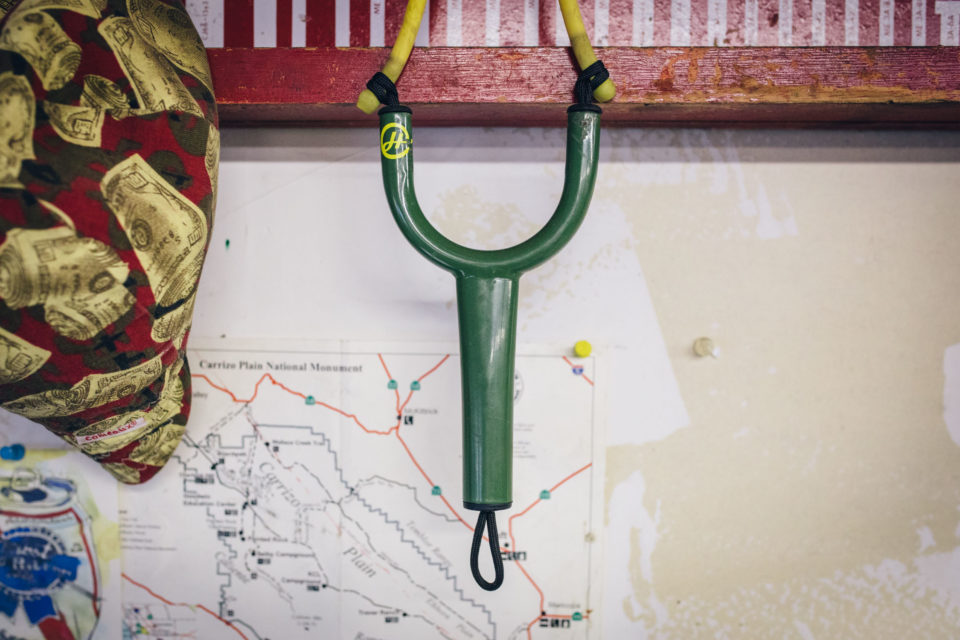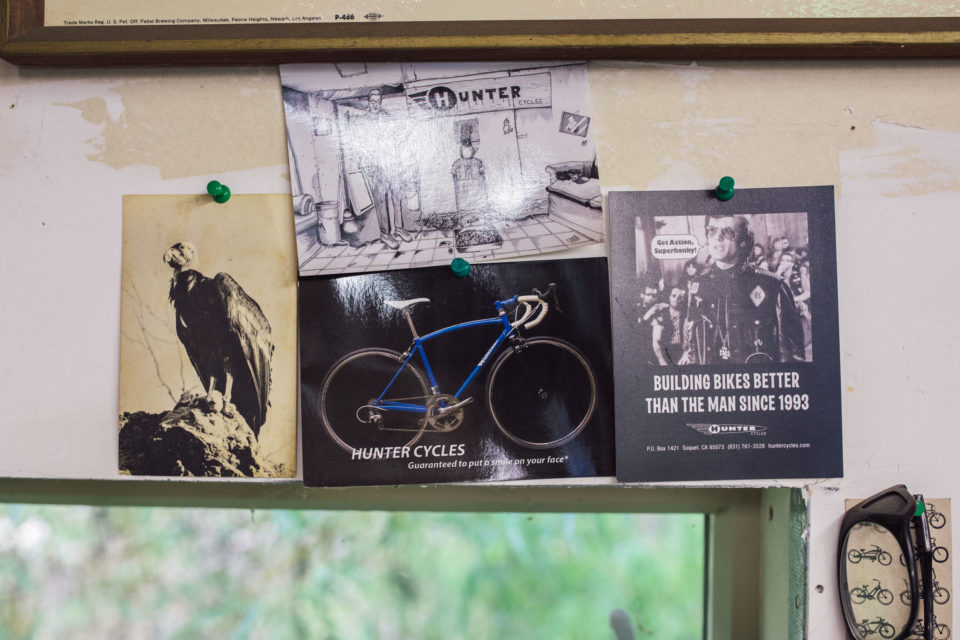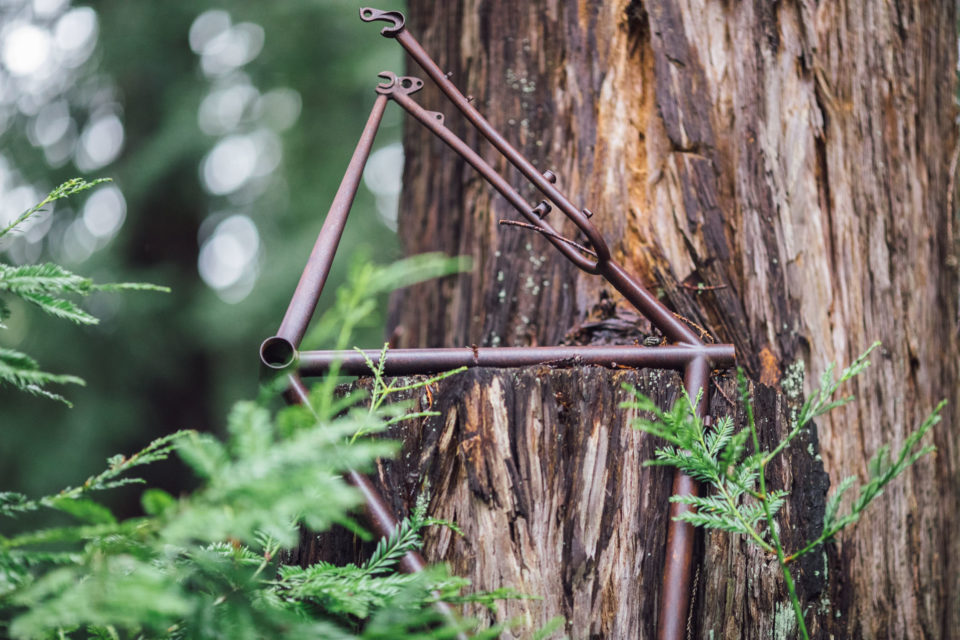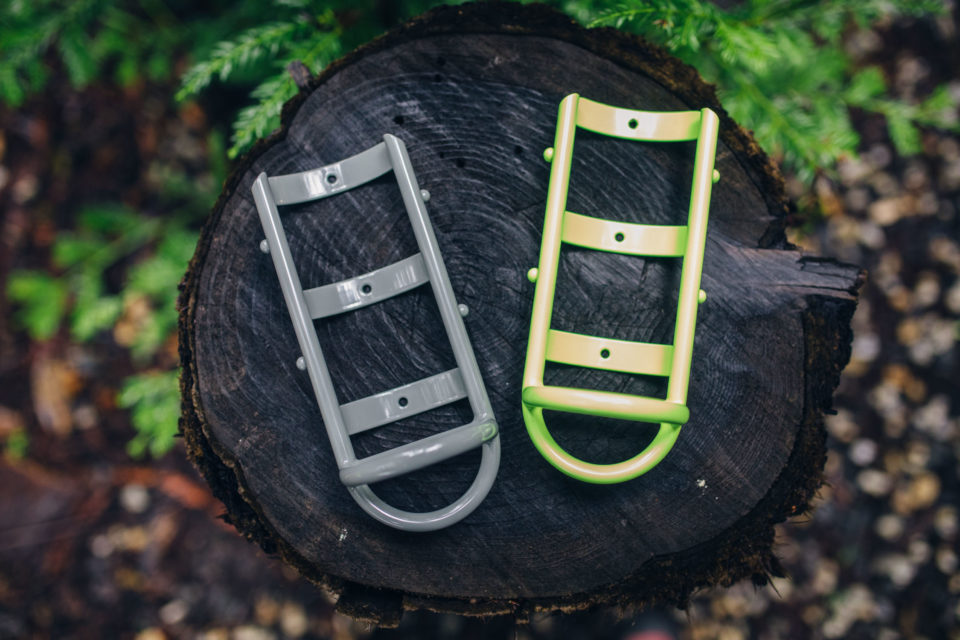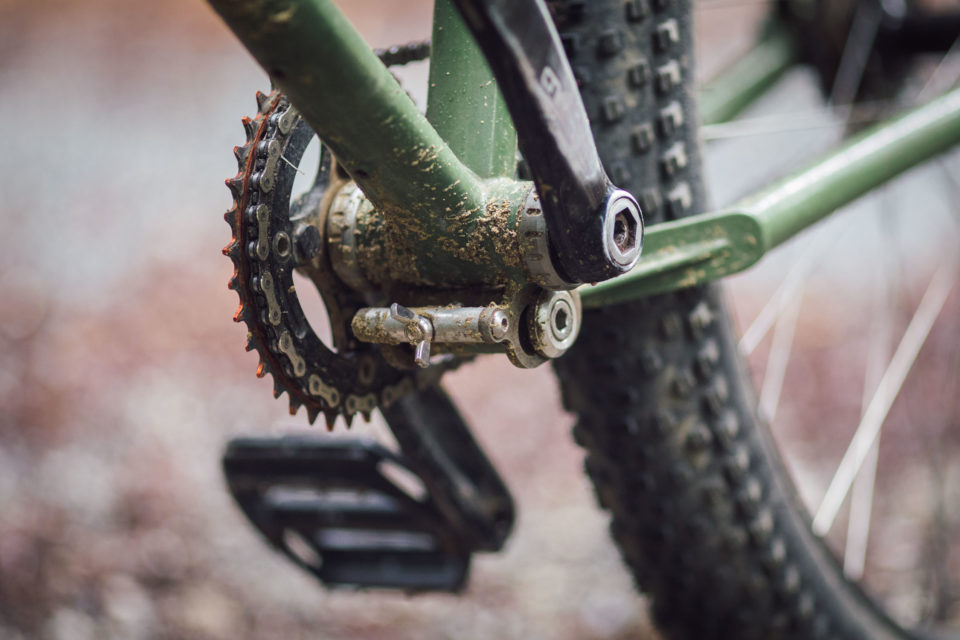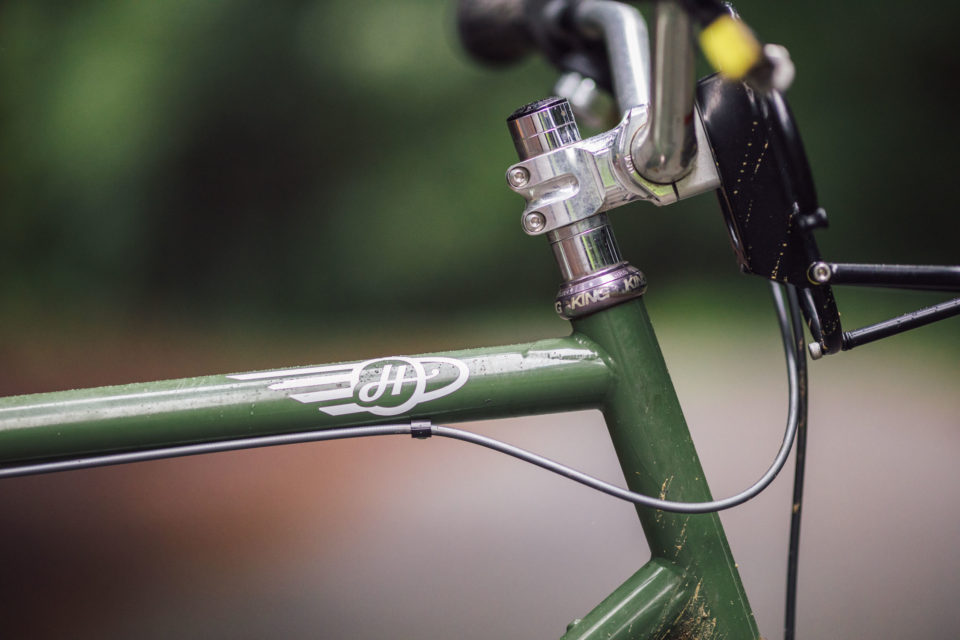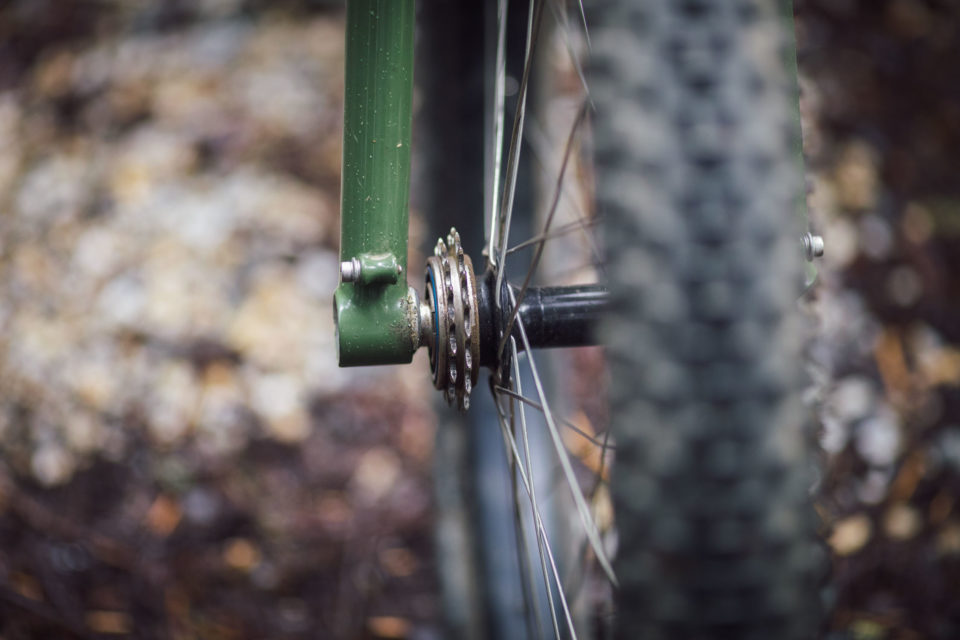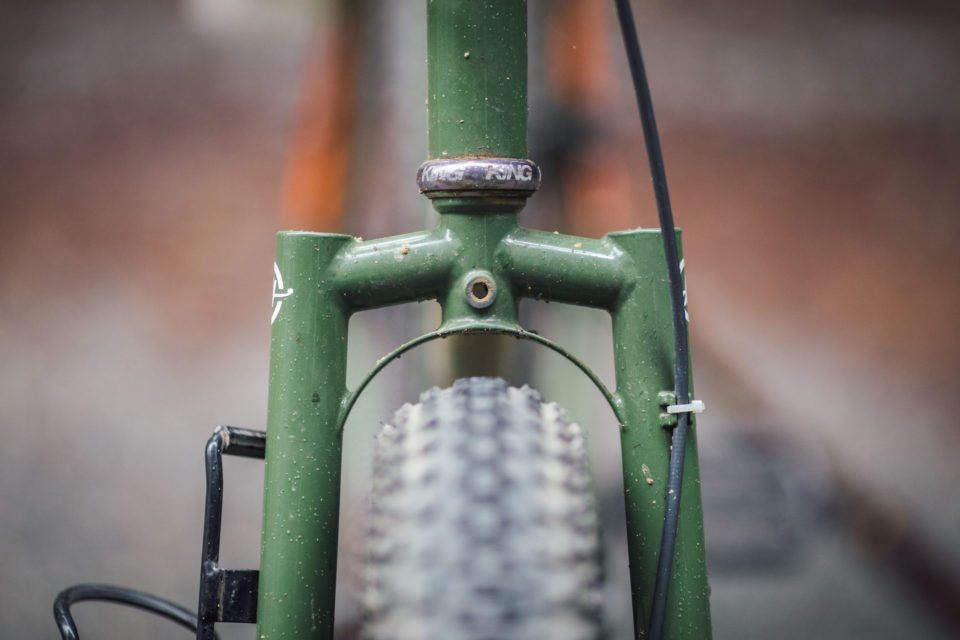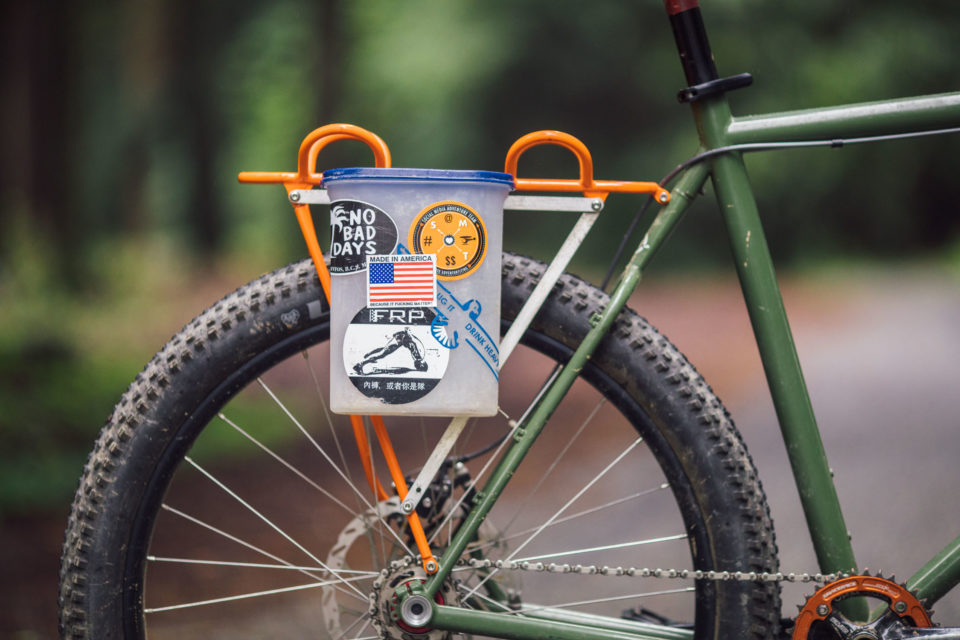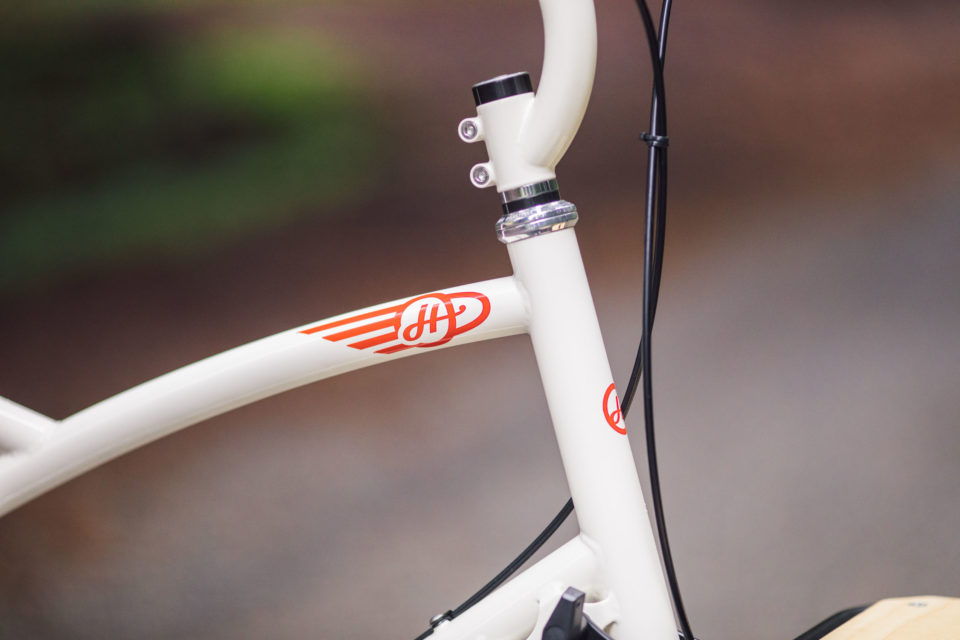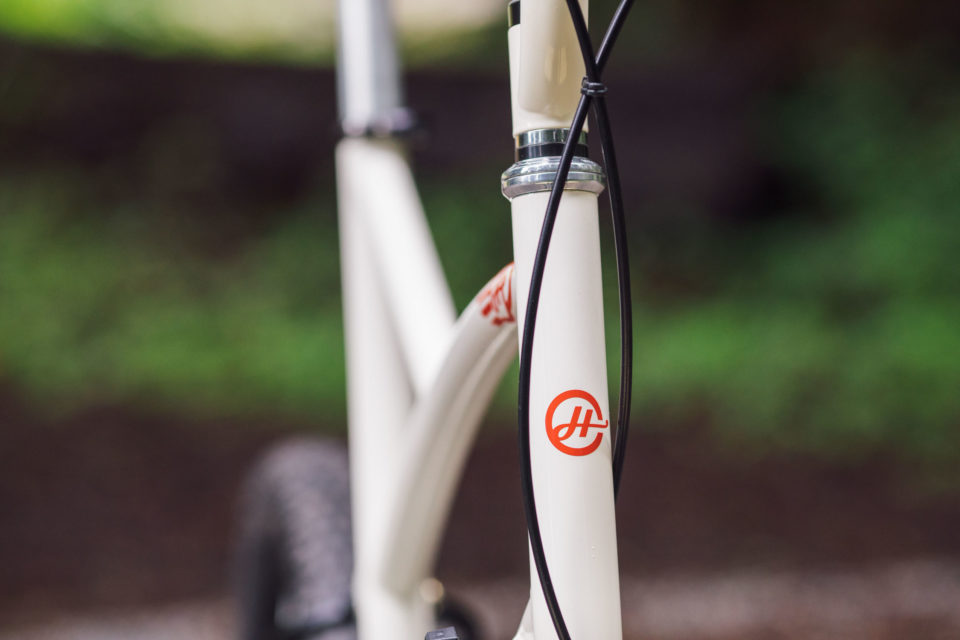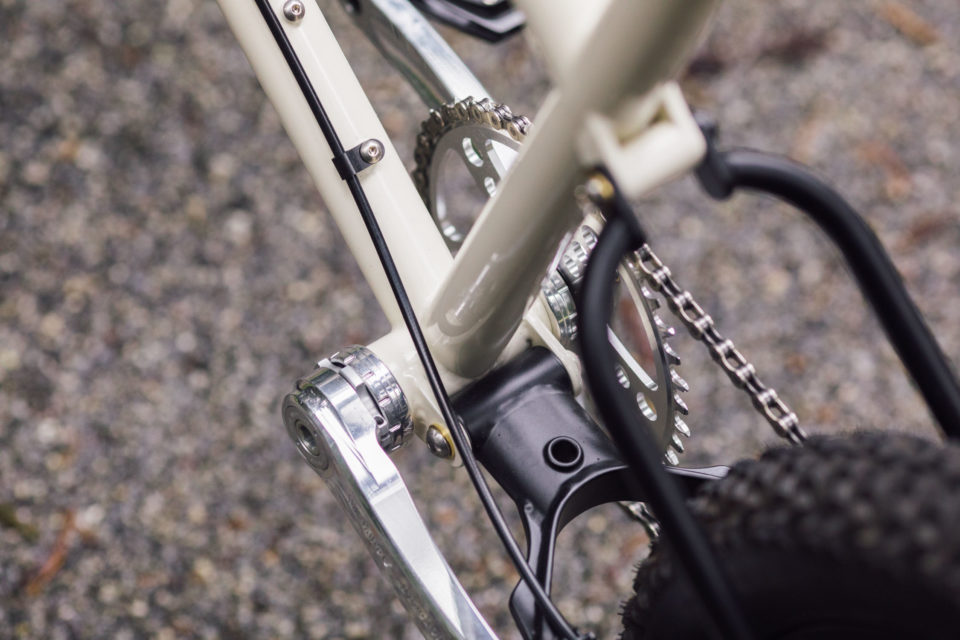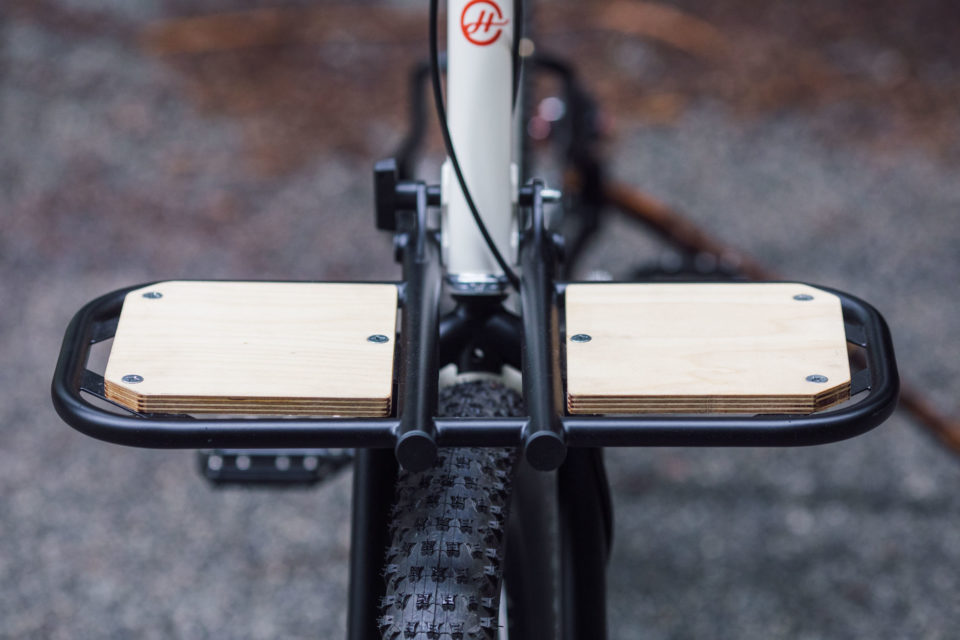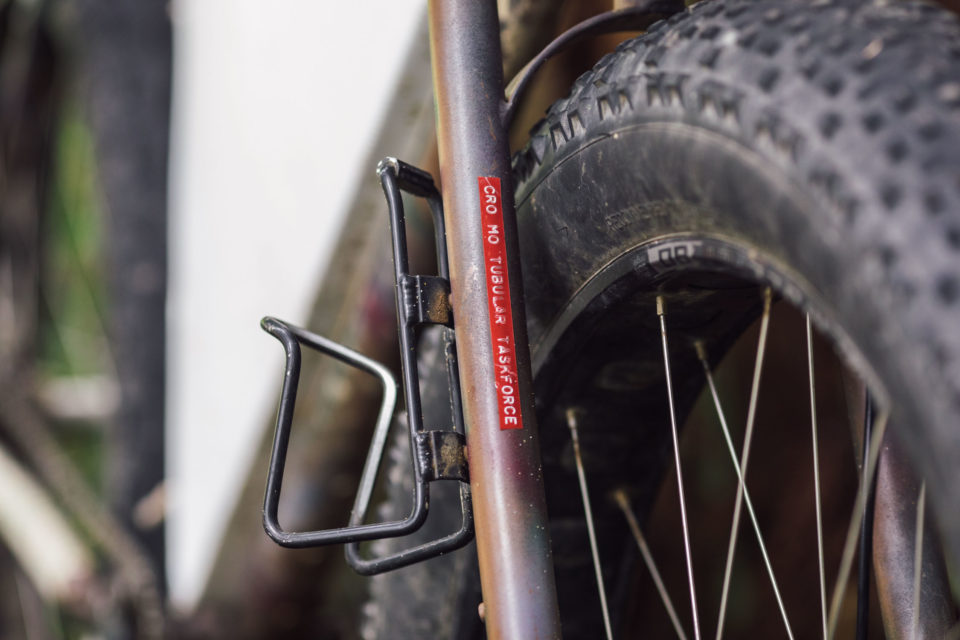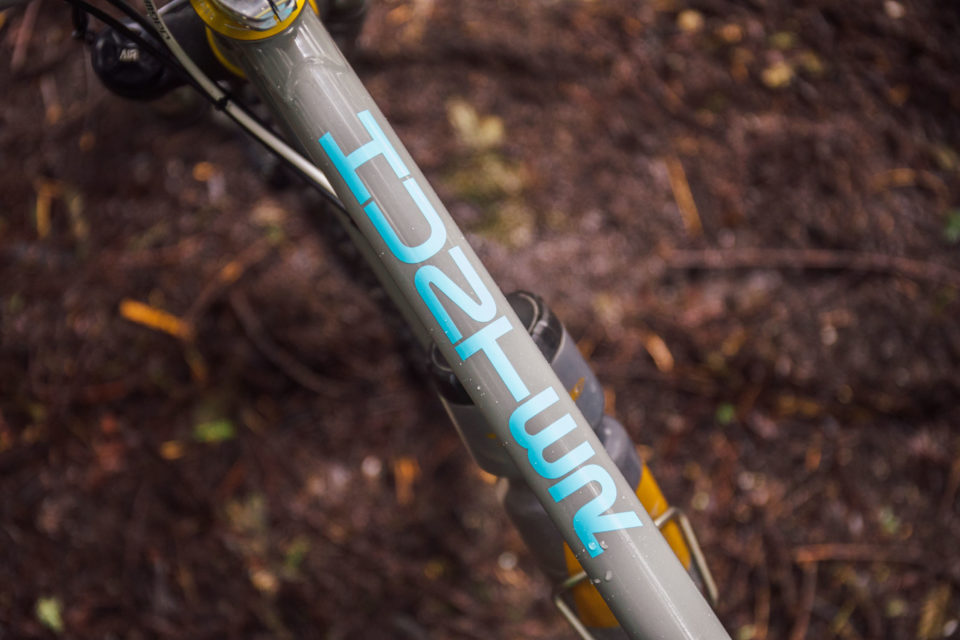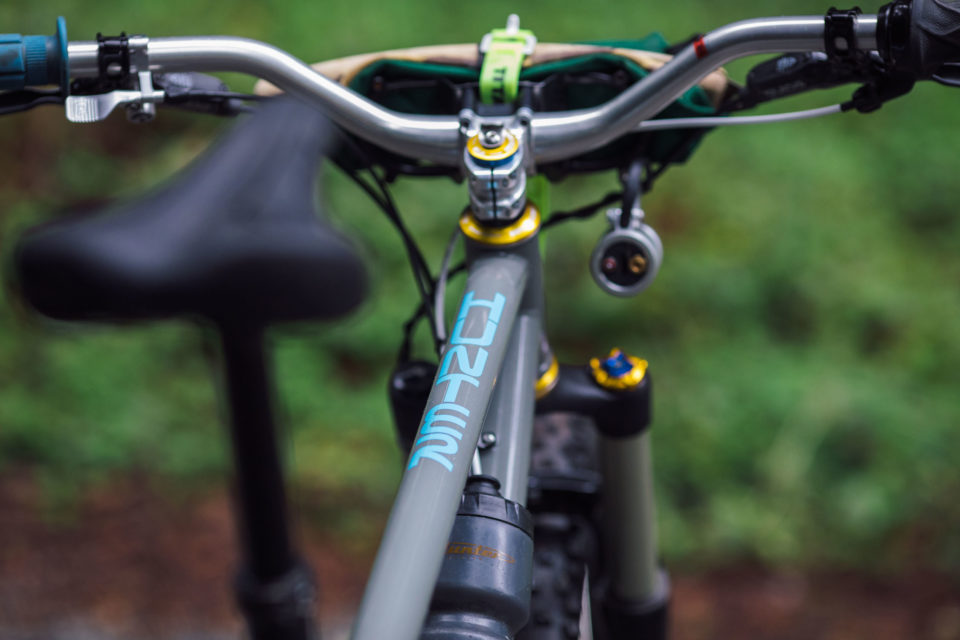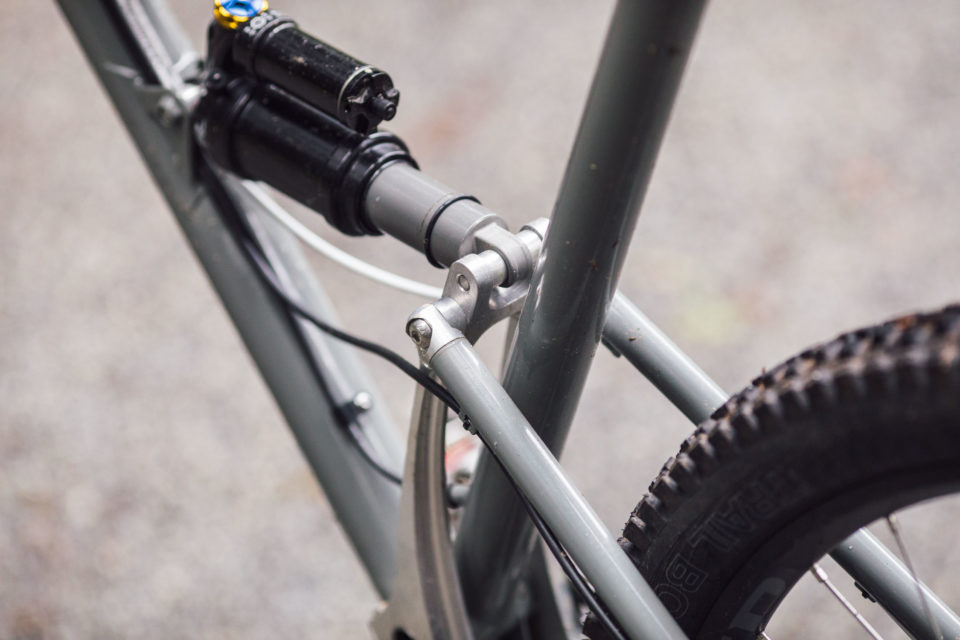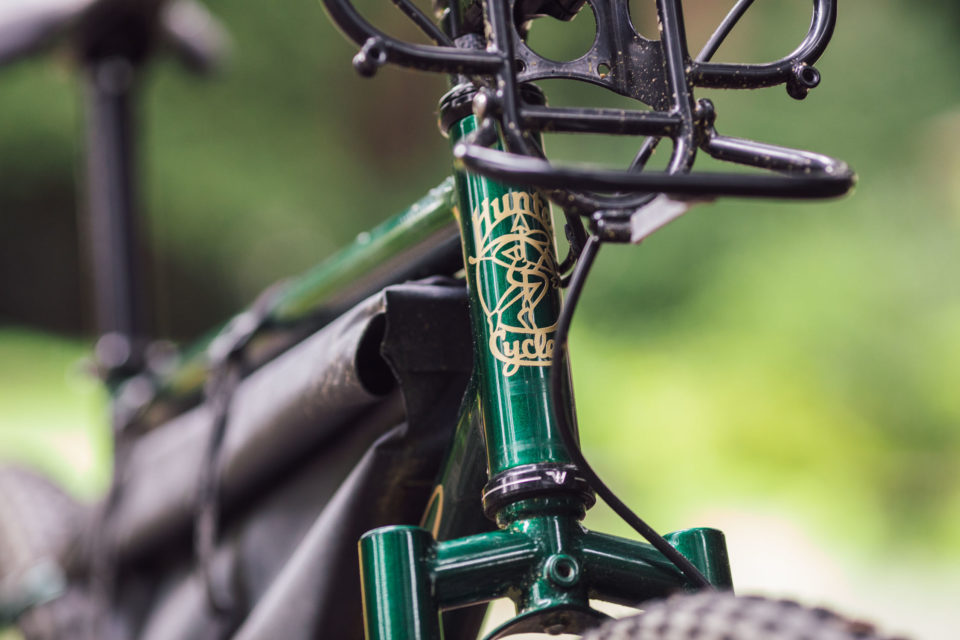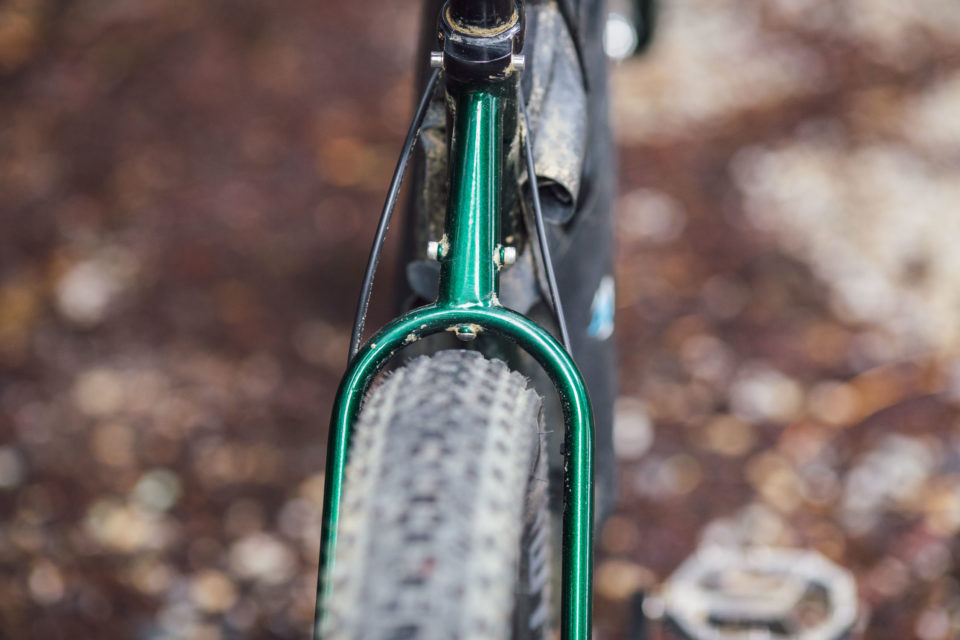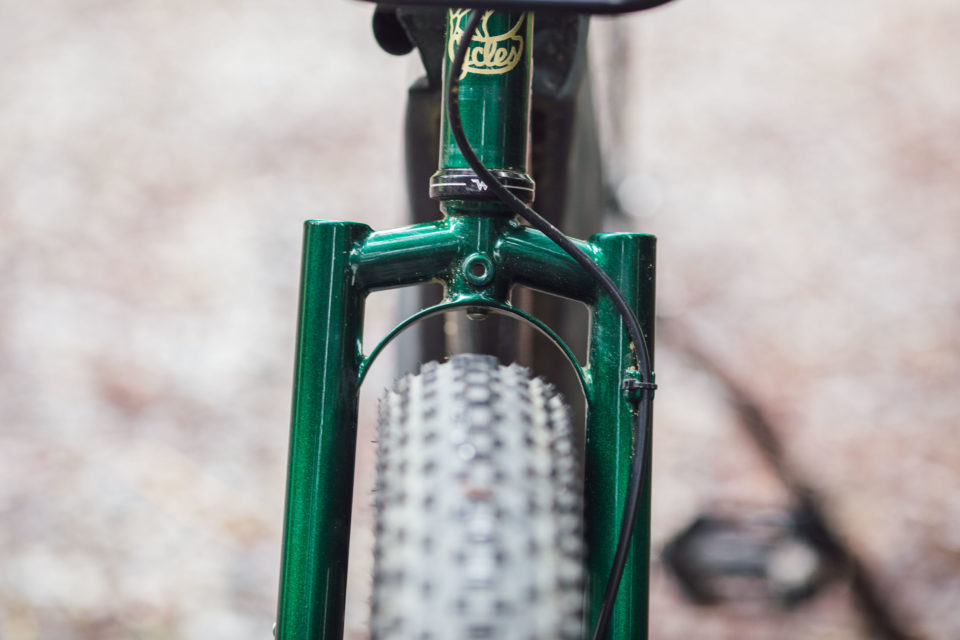Inside Hunter Cycles (and Rick’s Brain via Five Bikes)
Share This
Rick Hunter has been making bikes for over two decades. All the while he’s been tinkering, hacking, and fabricating interesting ways to carry gear on his “Condor Tours,” railbike debacles, and other such far-flung bad ideas. We had a chance to catch up with Rick at his workshop in Bonny Doon, California…
Rick Hunter, proprietor of Hunter Cycles, has made a lot of interesting steel frame bikes over the last 20+ years. But he’s not quite like many frame builders these days. In fact, he’s not exactly a frame builder at all. He’s more of a fabricator who makes bikes. Instead of welding pre-made fixtures to pre-formed steel, Rick forms his own seat stays, mills most of his own dropouts and derailleur hangers, and makes his own tools. He also makes several highly sought after components and “smalls,” such as Smooth Move handlebars and the Hip Shooter slingshot.
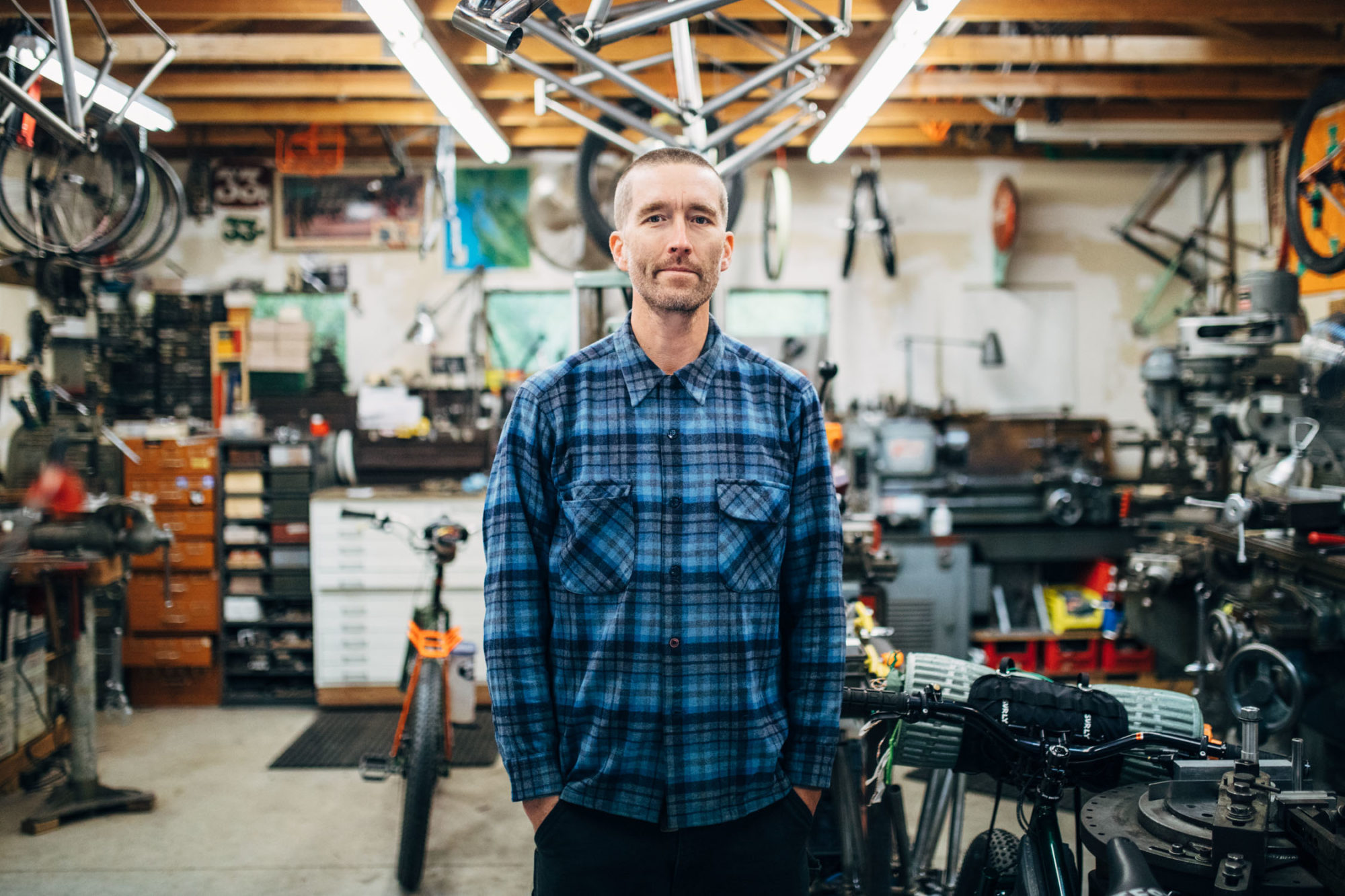
Rick’s also something of a legend when it comes to ultra-functional components. In addition to several original break-apart frame systems, chain tensioners, and racks, Rick’s been inventing new ways to carry gear on bikes since long before bikepacking became a thing.
As Porcelain Rocket’s Scott Felter described him, “I’m going with him when the apocalypse lands. He has, and likely will, never adhered to any sort of trend when it comes to designing ways to carry things on a bike.” This level of innovation shines through in two of Rick’s latest inventions, the Hunter Bottle Cage, a three-pack cargo cage with integrated strap mounts (HunterNubz™), and the all-new Cow Catcher stem rack, which we’ll dig into in part two.
Read on below as we ask Rick how all this came to be, then try to pick his brain through five interesting bikes that he had on hand…
Your bike obsession started with competitive cross racing, correct? How’d that come about and what drew you into it?
My bike obsession started like most folks, just being a kid and riding my BMX to school and around the neighborhood. My friends and I would also ride to some small lakes to go fishing. We moved on to cruisers and MTBs from there. I did my first MTB race in ’88 when I was a sophomore in high school. I did a few other MTB races that year and the bug bit hard. I had a few friends in high school who also raced and rode MTBs. Mountain bikes (and cycling) were pretty dorky back then, so we were kinda oddballs and outcasts. I didn’t start racing CX until a few years later.
How’d that inspire you to build your own bike frames and ultimately form a business building bikes?
I was always interested in mechanical things. Always working on my bike or taking the bearings out of my skateboard wheels or models and Legos or whatever. In high school I did a lot of mechanical drafting classes, the metal shop closed down the year before, but I did have the drafting classes and wood shop. Senior year I had “Work Experience” where I got out early and just went to work at the local bike shop. My Dad is from Detroit and my Mom is from Windsor, Ontario, so a lot of the family were engineers, tool and die makers, machinists, etc. I guess it was in my blood. After high school I took a year off to ride and work and then I did a two-year Industrial Arts program at College of Marin. The same program that Mark Norstad of paragon machine works went through along with lots of other bike people. Growing up where I did, I was surrounded by mountain bikes and all the innovation and development in that area. And WTB was basically right down the street from the high school.
Being tall, I out grew most production bikes, and at a certain point I realized I could just make my own. I bought Greg Diamond’s old frame jig from City Cycle in San Francisco and started hacking around with stuff. The first frame I made was a CX bike for myself. Back then there really weren’t any proper racing production CX bikes available, at least in the United States.
Selling bikes as a business just happened from there, mostly for friends. I never had a business plan, ha, I still don’t! My first random customer was a super tall guy who somehow found me. I made about 5-10 bikes in Marin then I moved to Santa Cruz when I was 21.
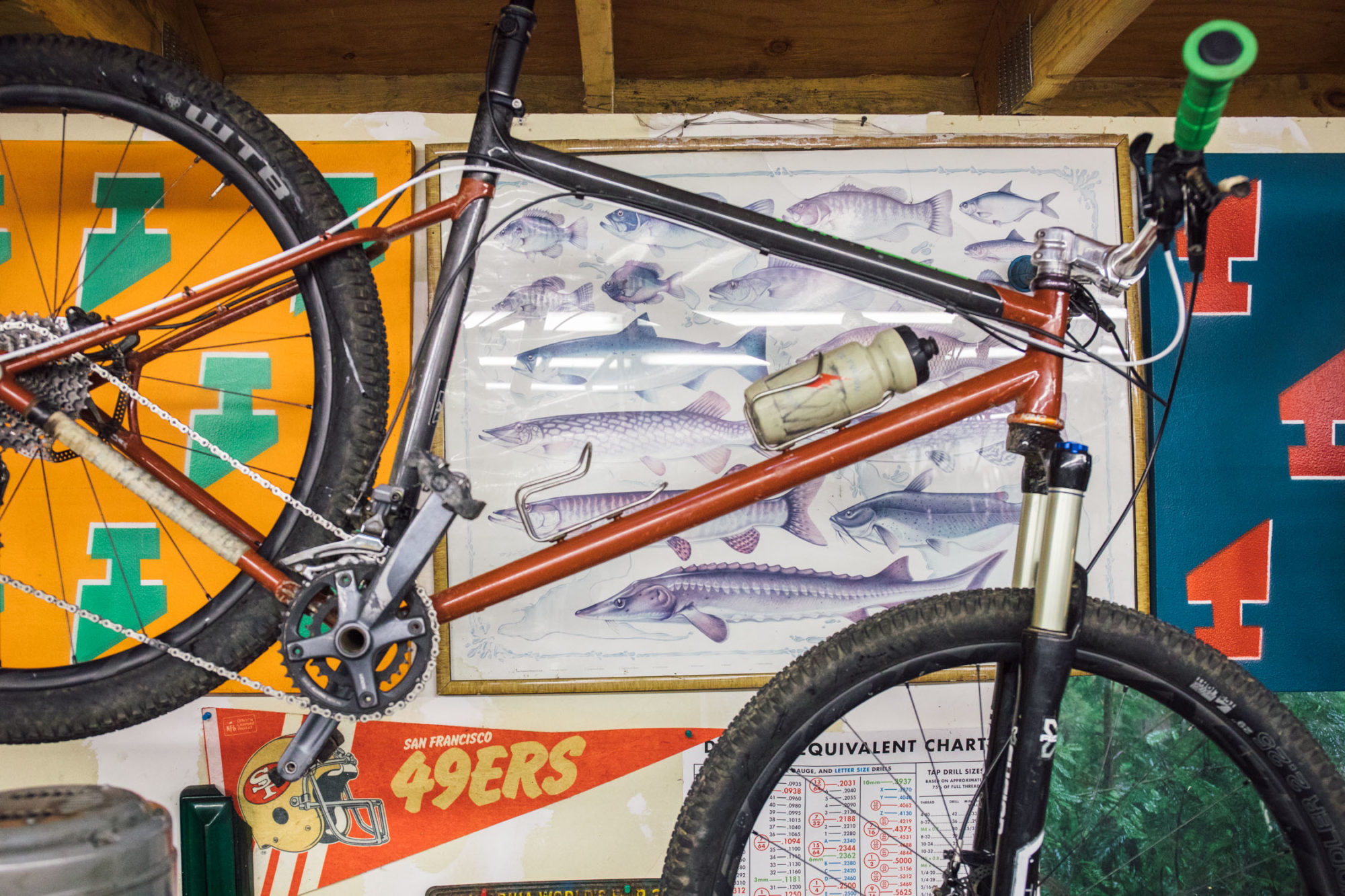
When, where, and why did you take your first bike tour?
I was definitely more of a bike racer back then. Mostly car camping and going to races across the Western US. Maybe a few quick overnighters or sunset cruises, but nothing extended. In ’96 I went to England to race the Three Peaks Cyclocross in the Yorkshire Dales. I did the race and then took the next week or so to ride back south. I had a rear rack on my CX bike with panniers, my jerseys stuffed with things, and food. It rained the whole time. I mostly stayed at hostels and just bounced around the country side. Chipps Chippendale put me up for a few nights when he lived in Bath. That trip was basically my first real bike tour.
What first led you to tinker with and fabricate systems to carry gear?
A burning creativity, DIY mentality, and also being a cheapskate helped. I just wanted stuff that was simple and light and affordable. Bikepacking gear is super trick now, but it wasn’t always that way. I would see people with these huge heavy canvas bags, like Lord of the Rings stuff, basically carrying more bag than gear. Give me a heavy duty dry bag and a few cam straps any day.
Tell us a little about the “Condor Tours.”
Condor Tours are basically just mini tours, hopefully as much dirt as possible, though the central California badlands AKA “Condor Country,” usually in the springtime. We had a great crew rolling those for a while, lots of good adventures and varied terrain.
What got you started in the direction of making creative chain tensioning and breakaway systems on your bikes?
I want my bikes to be unique and I like being creative and trying new things. I’ve been developing the chain tensioner system since 2007, maybe. I raced a lot of single speed MTBs so I’ve seen and used everything: slotted tips, EBBs, bolt-on tensioners. They all work, they all get the job done. With disc brakes and thru-axles I wanted to make something that was more universal with less hardware, it also doubled as a breakaway point for separating a frame for traveling.
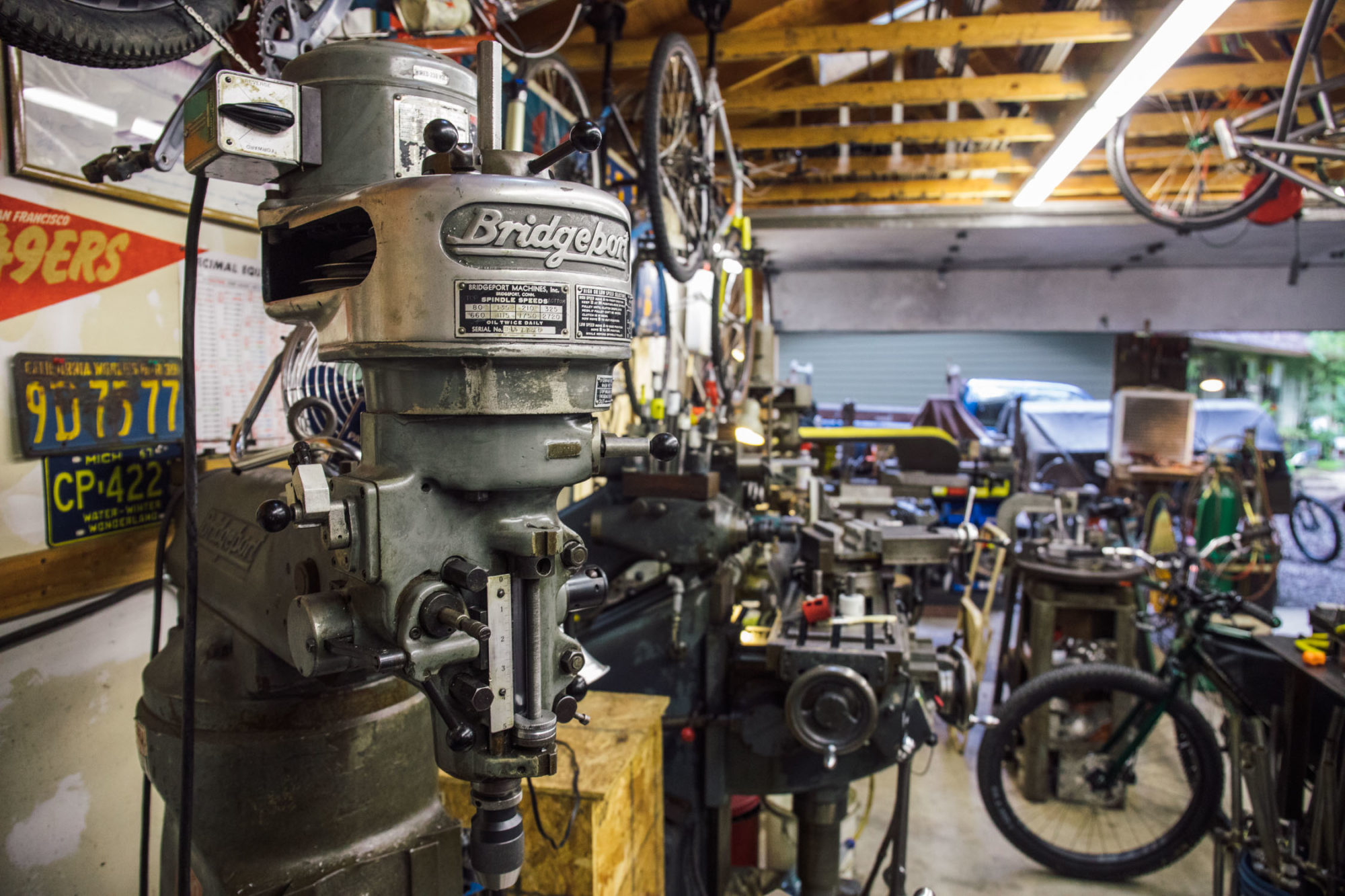
I hear you have an extensive collection of Randi-Jo Fabrication’s work? Do tell…
I met Randi and Eric when Eric ordered a frame from me through the local shop. We became friends and collaborators after that. Randi Jo Fabrications did a whole team’s worth of wool jerseys and wool shorts for my CX team. They were incredible. Collared jerseys and bib shorts, all wool. I still have mine. She’s done wind vests for me, tons of caps, etc. We’re good friends I try and visit them in Oregon every chance I get.
What’s the stupidest…let me rephrase that…most creative multi-day trip you’ve ever done?
There are a few, I guess. I followed Scott and Skyler through Argentina for a month, I had nothing to do with the planning or creativity, I was just the quiet guy in the back chewing gum and blowing bubbles. That was for sure the most incredible tour/vacation/journey I’ve ever done.
My friend Robin and I have done some Death Valley tours on fat bikes that have been memorable for lots of reasons.
Recently, I’ve been doing some biking to hiking trips where I ride in and then stash the bike and do some hiking. Those are interesting and diverse. I like being on my feet, there’s a lot of places where you really don’t want a bike anywhere near you with overgrown trails, no trails, wilderness, and so on.
It sounds like your railbike trip was one hell of a “bad” idea. Why did you make a railbike in the first place? Better yet, why are you making another one?!
That first trip I did with three other guys was pure adventure. I built four rail bike attachments that converted to one-wheel cargo trailers. We rode dirt roads mostly to various segments of dormant or abandoned rail line. Railbikes are very romantic, but also pretty impractical unless the conditions are perfect. Once a rail line shuts down, nature takes over pretty quick with landslides and trees and brush growing up through the ties and around the rails. The first rail segment we tried to ride was more scrambling and pushing than actually rolling. We could have walked faster. And there were some sketchy caved in tunnels. That was a rad trip and we had a story in BIKE a few years back about it.
Not sure what really lit my railbike fire, maybe it was just seeing abandoned rail lines and dreaming of where those lines could take you. You see some really cool stuff from rail lines that you wouldn’t see otherwise. Railbikes are as old as the railroad itself. Nothing new there. I special ordered the “RailBike” book from the local bookstore, there’s some basic plans in there and I just tweaked and tried to improve them. I’m on version three or four of my railbike design now. I just see it as hobby, a way to capture and enjoy a decaying, dismantled infrastructure. I’ve written a few short stories involving railbikes. They are a dream, mostly.
There’s a deep-rooted community of bicycle makers and fabricators here in the Santa Cruz area. How has that scene shaped your work?
It’s always nice to be around people who are creative and have similar interests. When I first moved to town, Bontrager was at its peak. There was a real bicycle factory in town, a nuts and bolts, down and dirty manufacturing company. Lots of people worked there. I knew quite a few of them and building steel frames was what we talked about. I shared a shop with Paul Sadoff of Rock Lobster for five years, learned a bunch of tricks from him, saw his work ethic, put what I saw and heard into my own bikes, and kept growing my shop one piece at a time.
The town of Santa Cruz has had a huge impact on framebuilding and cycling in general. Kestrel carbon bikes were some of the very first production molded carbon bikes, they were made in Watsonville. Calfee (formerly CarbonFrames) was in San Francisco and Santa Cruz county making bikes for Greg Lemond. Santa Cruz Mountain bikes is an industry leader, though they never made the frames in the county (excluding prototypes and team bikes). Plus, all of the smaller builders and people right over the hill, like Ritchey. There’s a ton of bike industry in the area, past and present. There are a lot of cycling-related resources and free thinkers here.
Any favorite local (legal) trails or dirt roads around here you’d like to share?
Ha, lots of the trails around here are technically illegal or at least “grey area.” It’s a running joke, especially when people come from out of town. Some nice places to ride that are legal and also fun would be Demo Forest and Wilder Ranch State Park. Wilder was actually one of the very first Californian state parks to allow MTBs on singletrack. Big Basin State Park has really nice dirt roads, very quiet and pretty.
While visiting, I had the chance to take a close look at five of Rick’s latest bikes. In trying to pick his brain a bit more, I asked Rick to summarize why he made each one, and asked two questions about each:
ATB Camping Bike
Rick’s take: Modern old school MTB, rigid only, pure business with an end of the world apocalyptic durability and adaptability tinge. Also collapsable for jumping out of helicopters and storing in submarines.
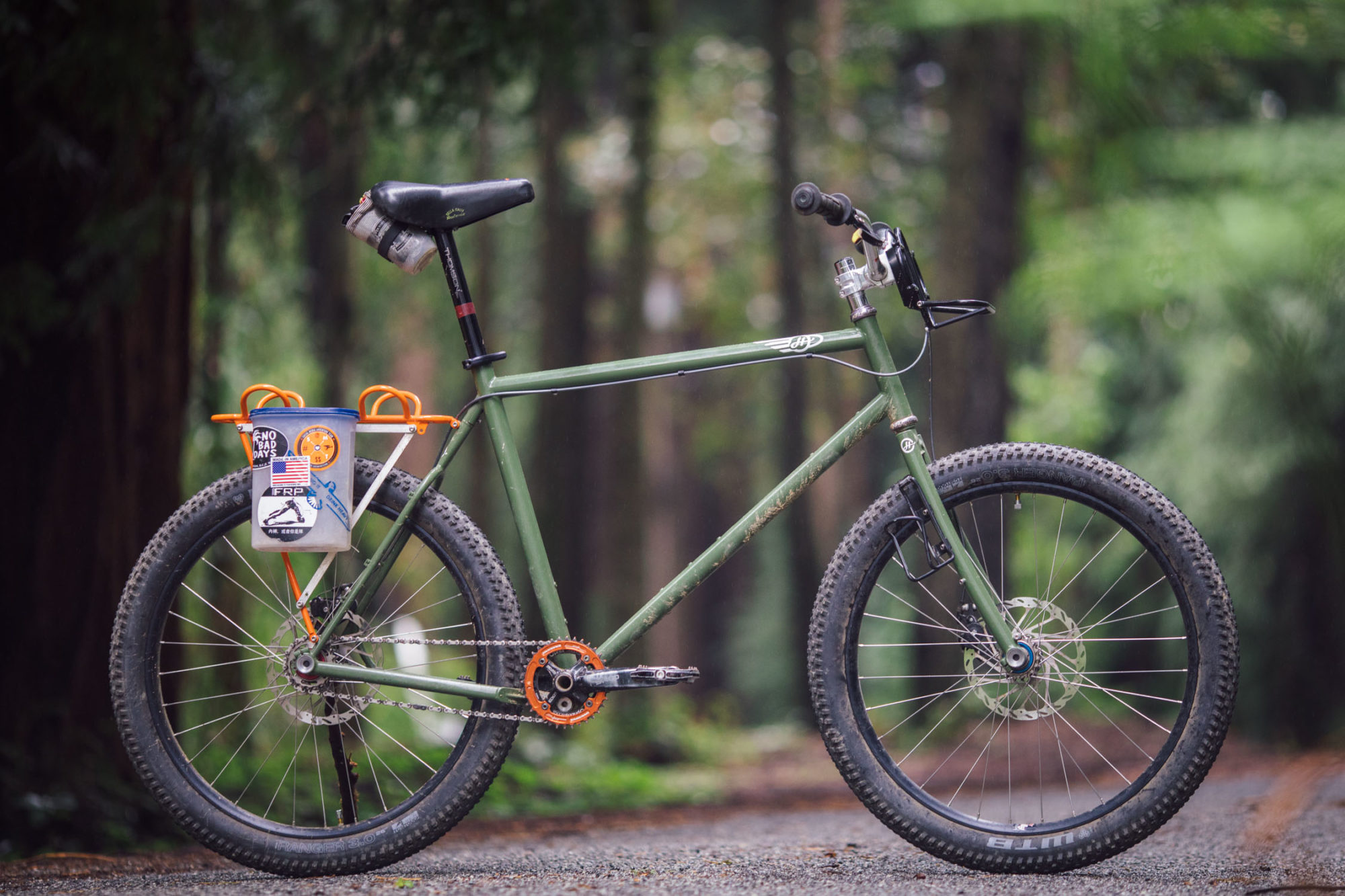
I think you’ve made Tupperware panniers before; what’s the reasoning and how do they perform?
They work great. Cheap and effective. They’re sealed from dust and rain. They are critter proof and tough. I usually store food in mine, good for not crushing your ripe pear or potato chips. Once the food dries up I generally start using it for my empty beer cans and trash. Pro-tip: make sure to thoroughly wash it out after the trip or mold will develop.
This bike has 135mm dropouts on both ends with two rear wheels, each with a dinglespeed rear hub (two cogs). It also has two rings on the crankset. How many gear ratio options is that, eight? Aside from being generally badass, how useful is this?
It’s useful. The gear range is from 40” to 63”, the bike is a single speed that you can adapt to different rides. Crankset is 32/36T and each wheel has a White Industries double freewheel on it (16/18, 20/22). The 142mm wheels work front or back. Some of the combos are redundant, but the spread actually works pretty well. You just need to ride alone or with friends willing to wait for you as you switch out the wheels or change gears. I also run this bike with a rear derailleur.
Travel Truck (Folding Cargo Bike)
Rick’s take: A fun machine, perfect for urban settings, traveling to big cities, getting on a bus or a plane. A good bike for small spaces.

Are folding, travel-friendly, mini-velo cargo bikes the next gravélbikes?
I’m not even sure what a gravel bike is anymore. But small wheels are fun looking, like a bear on a tricycle, and practical for certain things.
I imagine you can get this thing in a really small travel case. Is this something you thought about when designing it?
Oh yeah, for sure. It fits in a 26x26x10″ case, which is the airline standard.
Fatbike
Rick’s take: Everyone needs a fat bike, even if you just ride it once or twice a year. Fat bikes are incredible when you have the opportunity to ride them somewhere where you actually NEED it. If I lived where it snowed it would see a lot more use.
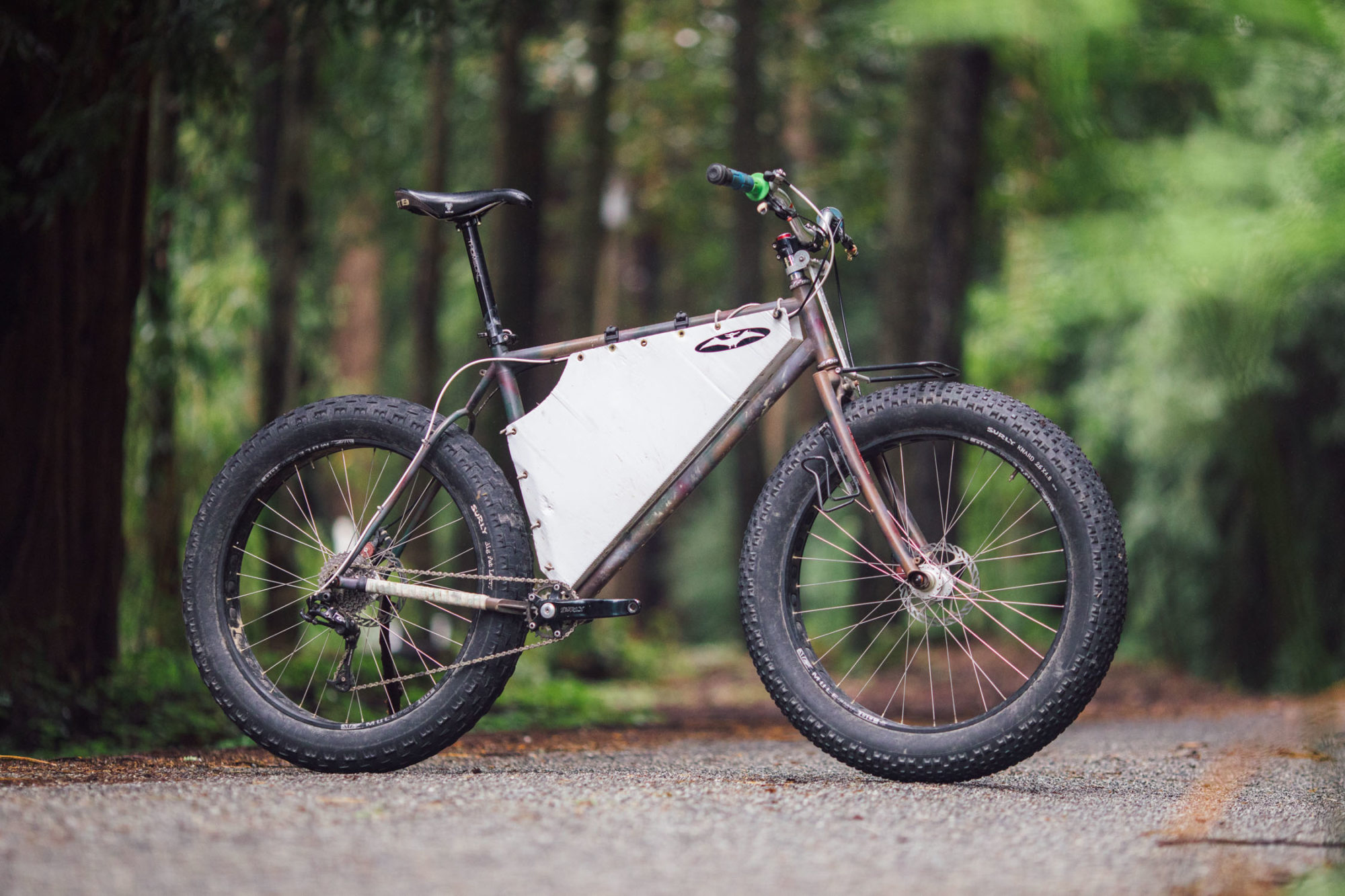
Why a Coroplast frame bag?
Light and cheap, I guess that’s a common theme for me. I’ve made a few over the years. Just $8 worth of materials. They’re awesome.
Having ridden this thing across the Atacama Desert, is there anything you’d change?
Next time I’m bringing a little pocket kite or sail for the wind. There were a lot of times we were basically being blown uphill, which made me think a lot about wind power. The bike worked great the whole time. We ran tubeless which saved our asses. We were going so slow that no amount of technology would’ve made much of a difference at walking speed. We were really loaded down. The first segment we did 13 days without a food resupply, always carrying 2-3 days worth of water. With the elevation and terrain it was slow going. I had a big rear rack on the bike, also with some panniers and my dry bag on top.
WoodRat 130
Rick’s take: This is my MTB. It’s an all-rounder, medium-travel, big enough for places like Moab or Downieville, small enough to do my neighborhood loop, perhaps efficient enough to for an XC race. I still ride my hardtail, but after 30+ years some full-sus feels pretty good.

It seems like there’s a significant uptick in steel full-suspension bikes. Why do you think this is?
Steel is just a lot easier to work with for small builders. It’s way more approachable, steel will always be strong and resilient, and it will always have that springy smooth feel.
Any idea how long it took to design and fabricate this bike?
No idea. I had drawings for years. I’ve done some other single-pivot bikes in the past, but this was my first chainline pivot. I designed it to be as easy to build as possible, just trying to deconstruct it and simplify everything. Building never takes as long as I think it will, with exceptions.
Prairie Dawg
Rick’s take: Big country touring bike for open roads and vast terrain. Large front triangle for bigger frame bag volume, long stable bike for high speeds and comfort.

Is 29+ dead, or long live 29+?
Ha, not sure, these bikes were my first 29+. Excited to try it myself. People love them. The big wheels makes sense for rough roads and washboard, and the traction is great. The bike industry goes back and forth on wheel sizes, so listen to people who have them.
What’s the rationale behind the slightly but elegantly curved fork?
Oh, just a way to add some softness to the forks, instead of just making straight blades. It’s pretty minor, but the blades end up being slightly longer for the same axle-to-crown length, so they should be a little more compliant. Also it looks classy.
Stay tuned for a deeper look at the Hunter Cow Catcher. For more on Hunter Cycles, visit HunterCycles.com. And be sure to follow Rick own Instagram @huntercycles.
Please keep the conversation civil, constructive, and inclusive, or your comment will be removed.













